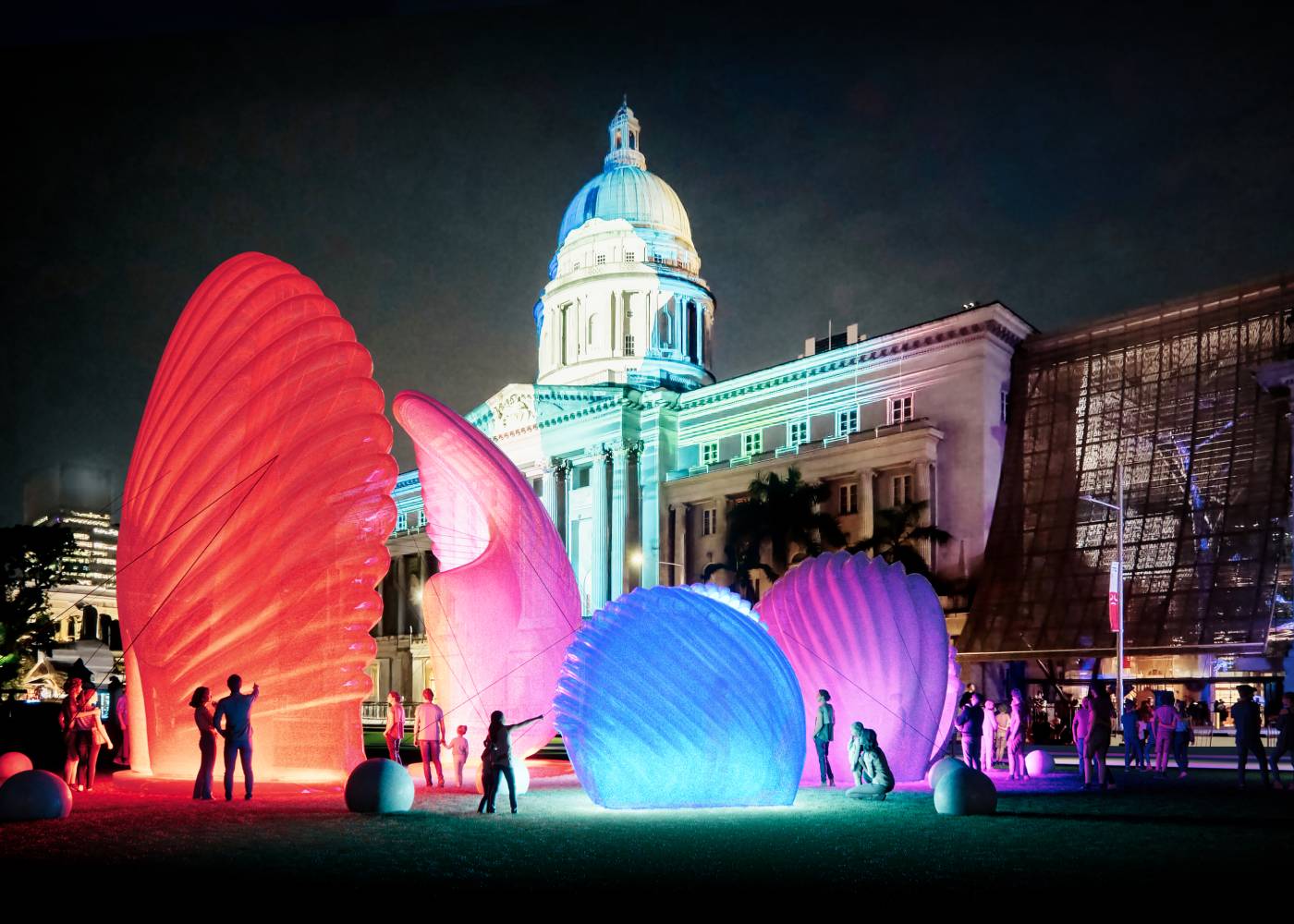Shaping the Future of Eldercare Through Experiential Learning and Technology
Published on November 19, 2024 | by DSGN arcHive
We caught up with the brains behind LifeLab™@SLEC to chat about the inspiration, design, and impact of this award-winning project.

What does it take to create a space that connects generations, sparks empathy, and pushes the boundaries of eldercare? The award-winning LifeLab™@SLEC, designed and built by ID21 Pte Ltd, is doing just that. Recognised at the Singapore Good Design Awards 2024 under the Experience Design category, it’s a game-changer for learning about ageing and caregiving. Created for St Luke’s ElderCare (SLEC), this immersive space uses sensory elements, virtual technologies, and cool features like ageing simulation suits to make eldercare real for everyone—staff, caregivers, volunteers, and students alike. With adaptable spaces and hands-on training tools, it’s all about learning, understanding, and building empathy.
We caught up with Hisham Musiran, Associate Design Director at ID21, and Elijah Sia, Manager at St Luke’s ElderCare CommCare Academy, to dive into the inspiration, design, and big impact of this brilliant project. Scroll down for the whole scoop…
Shaping the Future of Eldercare
1. What was the inspiration behind creating LifeLab™@SLEC, and how was the initial concept for such an innovative space developed?
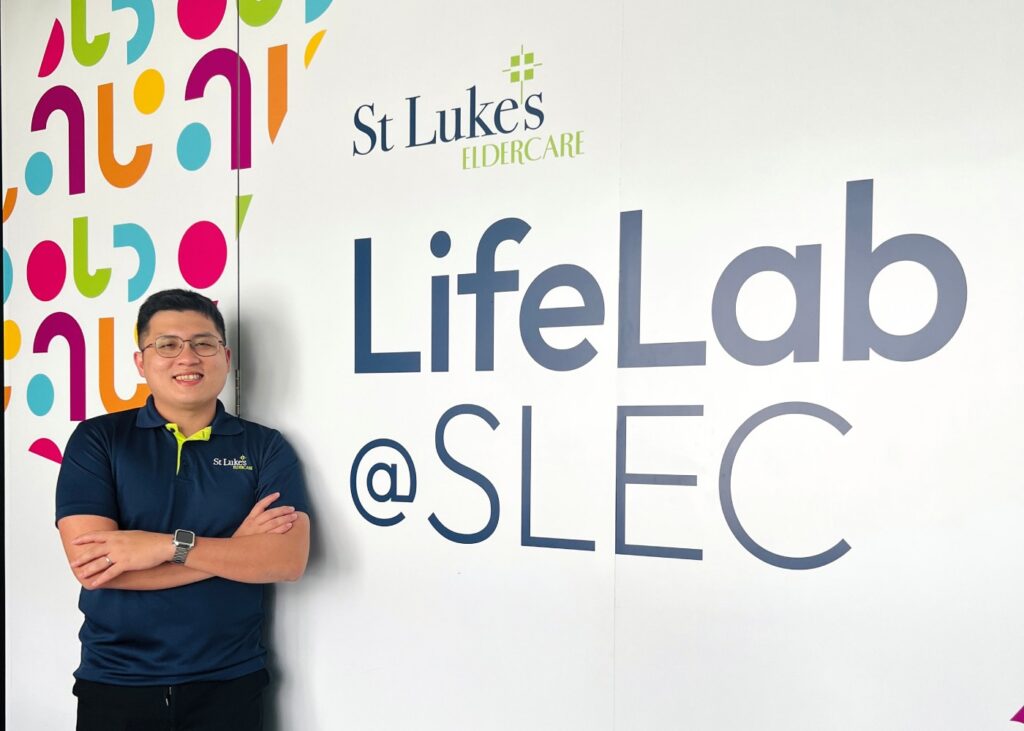
Elijah Sia (ES): With Singapore’s rapidly ageing population, bridging the generational gap is vital. We want younger generations to learn the realities of ageing through experiential learning, so they can better understand, empathise with, and support seniors in society. LifeLab™@SLEC, situated within the SIM Global Education building, is our pioneering effort to engage the next generation on the experience of ageing.
2. Can you walk us through some of the key design features that make LifeLab™@SLEC a unique experiential learning centre for eldercare?
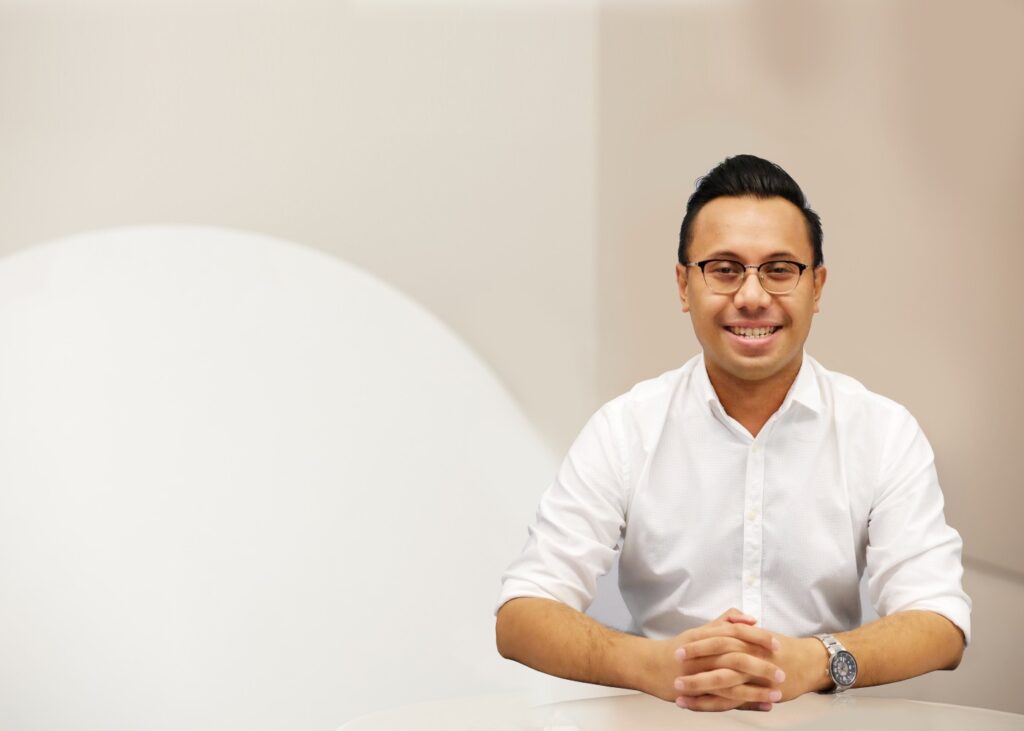
Hisham Musiran (HM): Utilising cutting-edge experiential and virtual-reality technologies, this facility offers visitors a unique opportunity to explore, learn, and truly understand what ageing entails. The design philosophy behind LifeLab™@SLEC is rooted in engagement and inspiration, supporting knowledge-building for SLEC staff, caregivers, volunteers, partners, and students.
ES: LifeLab™@SLEC is not just a space. We envision it to offer a transformative experience for all our visitors. Inspired by the poignant phrase “Your Hand in Mine,” the layout artfully interprets the imagery of two hands clasped together, serving as a powerful symbolic expression of love, support, and compassion for the elderly.
3. LifeLab™@SLEC leverages cutting-edge technologies, from virtual simulations to interactive learning tools. How did these innovations enhance both the training capabilities and the practical understanding of eldercare challenges?

ES: LifeLab™@SLEC is divided into five distinct zones based on the concept of (1) Educate , (2) Experience, (3) Engage, (4) Empathise & Reflect, and (5) Innovate. The integration of virtual simulations and interactive learning tools at LifeLab™@SLEC allows for a more immersive training experience. These technologies enable caregivers to engage in realistic scenarios that mimic the complexities of eldercare, fostering a deeper understanding of the challenges faced by seniors.
4. In terms of empathy-building, how do sensory-driven features like the ageing simulation suit immerse participants in the elderly experience, and what impact have you observed in terms of shifting perspectives?
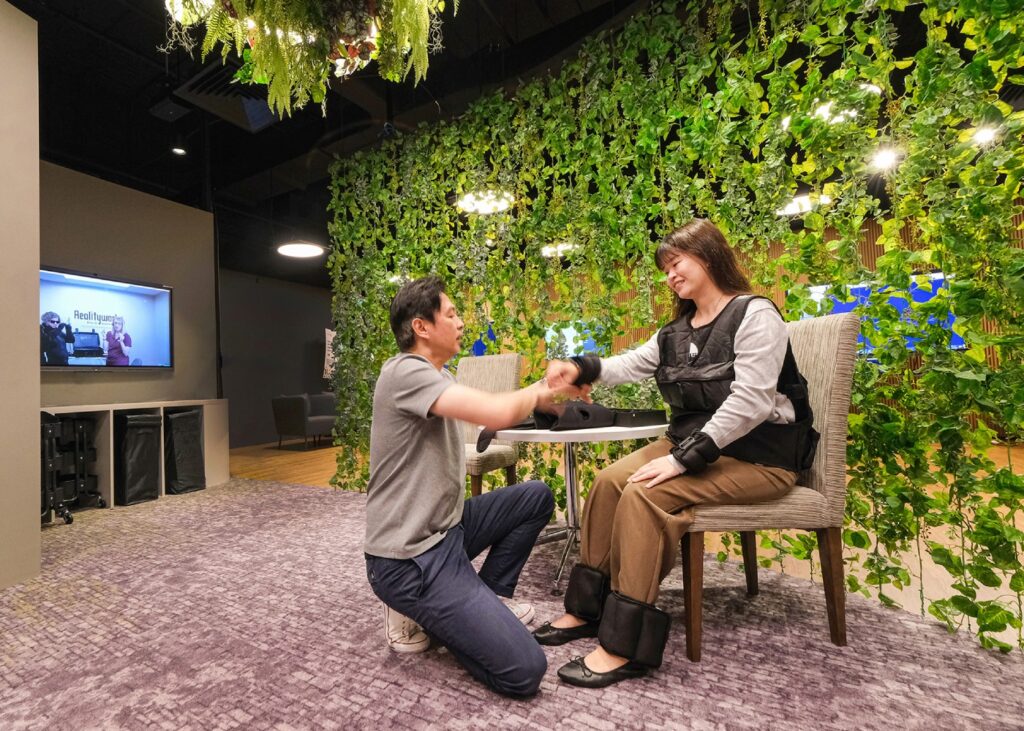
ES: By donning geriatric simulation suits while engaging in activities of daily living, participants are provided with tangible experiences of ageing. For example, they learn – and experience for themselves – how it feels more challenging to move and carry out simple everyday tasks such as pouring water into a cup, when their bodies, arms and legs are weighed down by the suits.
There are other activities that sensitise participants to the psycho-social aspects of ageing, including feelings of loneliness, helplessness and boredom, prompting reflection on the significance of relationships and purpose for elders in this stage of life.
Visitors to our LifeLab™@SLEC shared that they had gained better understanding of the physical effects and psycho-social aspects of ageing.
5. What challenges arose in designing a space that caters to such a diverse audience—staff, caregivers, volunteers, and students?
HM: Designing LifeLab™@SLEC to cater to a diverse audience, including staff, caregivers, volunteers, and students, presented several unique challenges that required thoughtful consideration and innovative solutions.
Diverse User Needs
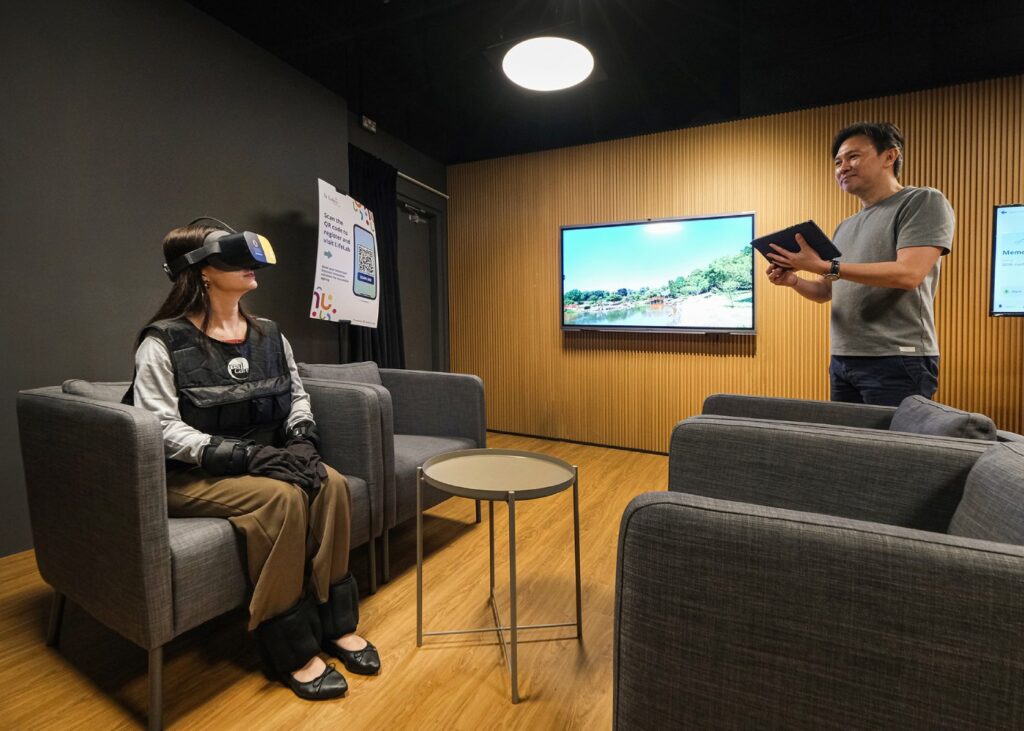
Each group interacts with the space differently, necessitating a design that accommodates various activities and learning styles. For example, staff may require functional spaces for training and meetings, while students benefit from interactive learning environments. We focused on creating adaptable areas that can be easily reconfigured for different purposes, ensuring that all users can engage meaningfully with the space.
Accessibility and Inclusivity
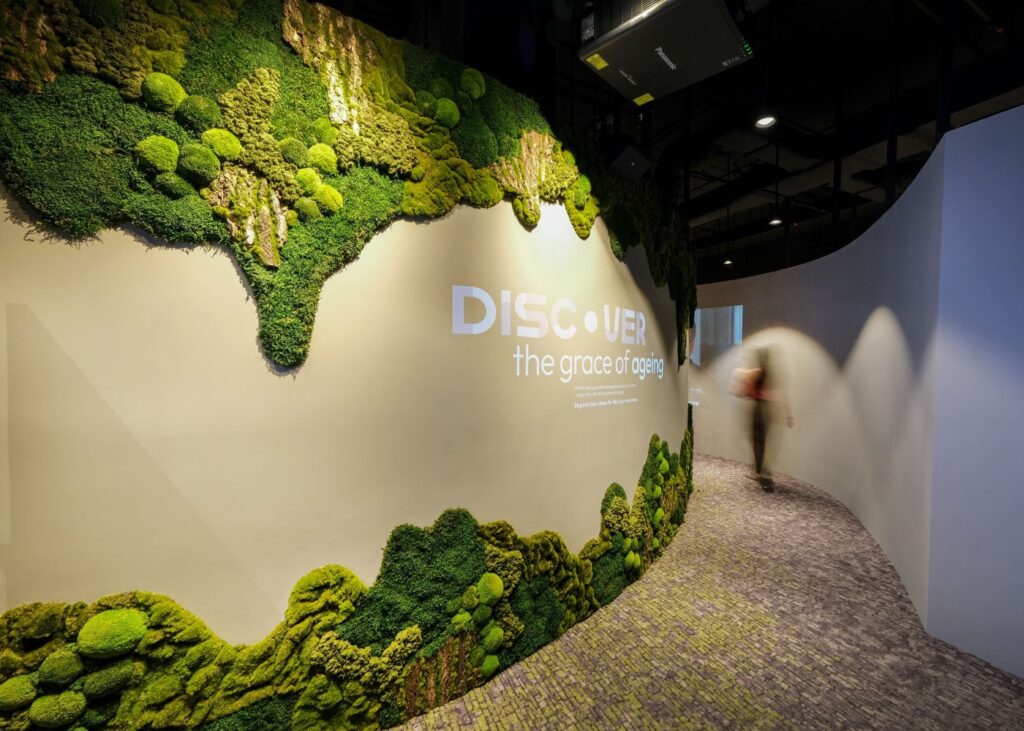
Given the diverse age range and abilities of the users, accessibility was a paramount concern. We incorporated universal design principles to ensure that all individuals, regardless of mobility or sensory challenges, can navigate the facility comfortably. This included features like wide corridors and adjustable furniture to accommodate everyone’s needs.
Technological Integration
With advanced technologies such as virtual simulations and interactive learning tools being central to the LifeLab™@SLEC experience, we faced the challenge of seamlessly integrating these systems into the physical space. This required careful planning to ensure that technology enhances rather than complicates the user experience. For instance, we designed tech hubs that are intuitively placed within training areas to facilitate easy access without disrupting the flow of activities.
Creating a Welcoming Atmosphere
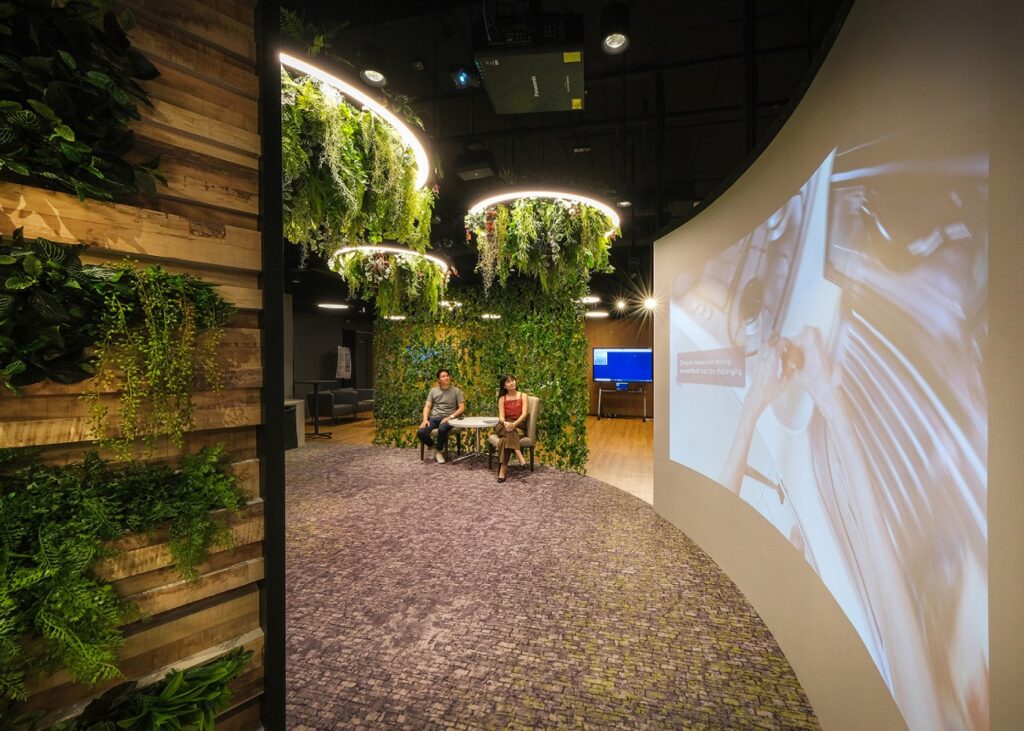
The emotional well-being of visitors is also crucial. We aimed to create an environment that feels warm and inviting while also being professional. This was achieved through the use of natural materials, soft lighting, and biophilic design elements that promote comfort and reduce stress for all visitors.
Collaboration Spaces
Recognising that collaboration among different groups is essential for effective eldercare training, we designed communal spaces that encourage interaction and teamwork. These areas are equipped with flexible seating arrangements and collaborative tools to foster communication among staff, caregivers, volunteers, and students.
In summary, designing LifeLab™@SLEC required a comprehensive approach that balanced functionality with emotional resonance. By prioritising adaptability, accessibility, technological integration, and collaboration, we aimed to create a space that not only meets the diverse needs of its users but also enhances their overall experience in eldercare training.
6. What are your hopes for the legacy of LifeLab™@SLEC in terms of its ongoing role in training and innovation within the eldercare field?

ES: Since the LifeLab™@SLEC opened in September 2023, we have hosted not just the youths but community partners, academic institutions, and the general public, including caregivers and elders. This underscores the LifeLab™@SLEC’s pivotal role in fostering awareness, understanding and empathy towards seniors in Singapore.
By 2030, one in four Singaporeans will be 65 and above. Many of us will become caregivers of seniors and eventually become seniors who may need caregivers. Hence, cultivating empathy for seniors and learning caregiving skills is important, not just for the eldercare sector, but for ourselves and the wider society.
And that’s a wrap! Huge thanks to Hisham and Elijah for sharing their amazing insights. Curious to learn more about LifeLab™@SLEC? Just click the link to check it out!
If you’re a designer with a standout project ready to make its mark, now’s your chance! Enter the SG Good Design Awards and let your work shine in the spotlight—click the link to find out more!
Wondering what we’re up to next?
Give us a follow and stay in the loop!
About DSGN arcHive
DSGN arcHive is your exclusive key to unveiling the enigmatic essence of a city, all filtered through the prism of design. Far from the ordinary tourist paths. We reveal the city’s architectural marvels, urban intricacies, cultural tapestry, and eco-conscious revolutions that mold its distinctive soul. With us, you’re invited to savor the metropolis in an entirely chic and sophisticated light, a city that’s far more than what meets the eye.
Copyright © 2025 DSGN arcHive



